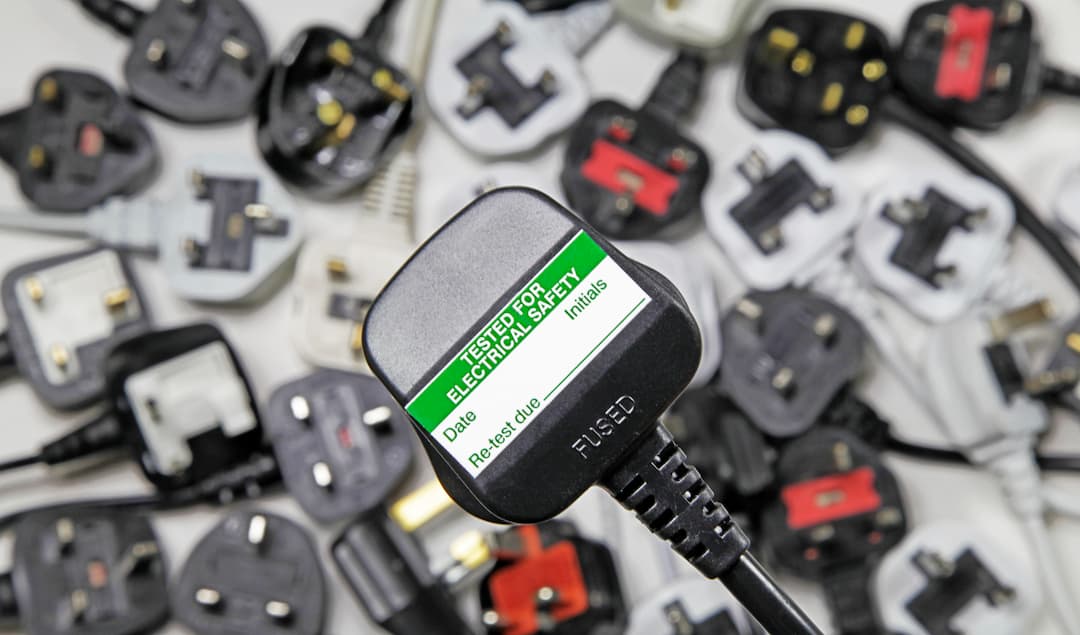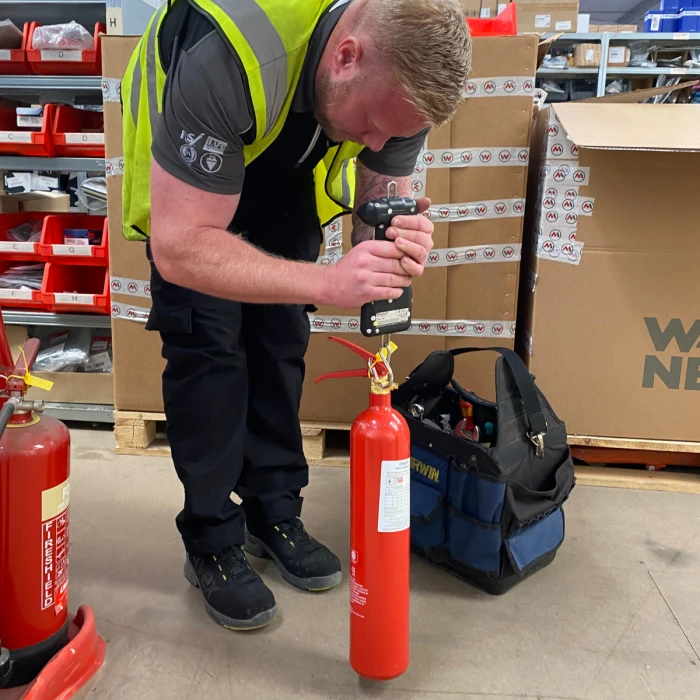Top 10 Tips To Report And Documenting PAT in Lichfield
The reports and documents generated from Portable Appliance Testing (PAT) provides tangible evidence of a duty holder's compliance to the Electricity at Work Regulations 1989. While physical testing is essential however, the documentation is presented to that the Health and Safety Executive's (HSE) inspectors and insurance assessors as well as examines your diligence. Documentation is the first defense in the event of an accident involving electrical equipment. It proves that the system was maintained according to the risk. The IET Code of Practice sets out the guidelines for ensuring adequate documents. These go beyond simple passes/fails to include assets registers as well as certificates of conformity and risk assessments. Proper documentation is not an administrative burden, but instead an integral part of the safety process, that allows trend analysis, providing the future risk assessment, and presenting a clear audit trail starting from the first inspection to any remedial action implemented.
1. The PAT Testing Certificate, also known as the Report of Inspection and Testing (RoI&T) in Lichfield
This is the primary output after a test. It must be thorough, and not a simple one-page summary. A certificate which is compliant should include the following information including information about the testing provider's company, details about the test subject (including his name and credentials) and the dates of testing, and the address of a premises. It must also contain the complete list of each apparatus that was tested (with the unique ID), all results (visual examinations and tests using electronic devices) as well as the date recommended to be used for the next test. It must be endorsed by the person having the necessary expertise who did the work.
2. The Asset Register: the Foundation of Documentation
The asset register is the primary document that records the lifecycle of every portable appliance. It should comprise an exhaustive log, which should include at a minimum an asset ID number (that is the same as the physical label on every portable appliance) as well as a full description, Lichfield, classification (Class II/III), type (e.g. mobile, stationary, IT), manufacturer, model and serial numbers. A good log will provide a full audit trail, including the test results as well as dates.
3. Failure of Appliances Reports, with Remedial Action Documentation in Lichfield
Failures should be documented. Documentation is required to be able to clearly trace the whole lifecycle a problem. It must include an appliance failure report which describes the root of the issue (e.g. : "failed Earth Bond Test: 1.8O") as well the action that was taken immediately (e.g. : "item labeled FAIL, taken out and unplugged") and a detailed record of the repair or disposal procedure was authorized. Once remedied, the documentation should include the results of the re-test and the date when the appliance was returned to service, thus closing the loop and showing that the hazard was effectively managed.
4. Labels and on Asset Identification
Labels attached to appliances themselves are essential for the system of documentation. The labels must be non-conductive and non-metallic. The label must clearly display the unique ID of the item, its date of testing it was tested and the name of the tester (or ID). The label should provide a prompt visual representation of the compliance status for users and inspectors. The information printed on the label must exactly match that in an asset register or certificate.
5. Risk Assessment Documentation
The frequency and nature of testing should be determined from a risk assessment that is documented. The PAT suite does not come complete without a report. It should record the results that are made, including the type and Lichfields of equipment employed, the user's competence and the reasons for making the decision to use inspections and testing intervals. This document will provide reasons for why some low-risk equipment may require a more thorough testing schedule. It's a better approach based on risk instead of a blanket policy that is not supported.
6. Certificate of Competence as well as Insurance in Lichfield
The documentation should contain evidence of the tester's expertise. It should also contain documents that prove the validity of the certification (e.g. City & Guilds 2377), as well evidence that the tester is insured against public liability. While it's not a complete evidence of the test the test, supporting documentation is vital as it validates the entire process. The documentation shows that the person who is responsible for appointing an expert took the appropriate steps.
7. Calibration Certificates for Testing Equipment
The accuracy is crucial to every electronic test. A valid calibration certificate for the test equipment must be included with the paperwork. The certificate needs to be renewed annually. It is proof that the readings from the device can be traced back to national standards.
8. Digital Reporting Systems and Online Portals
The best practices in the industry have moved toward digital management. Numerous providers now offer access to a client portal online. The dutyholder can access their online portal, view and download their current and historic certificates, as well as run reports 24/7. It's a far better option than traditional paper-based systems. It reduces the risk of losing data, makes it easier to locate records during audits, provides an encrypted permanent record and is easier to access. The accessibility of a system is an indication of an experienced service.
9. Long-Term Records Retention and Data Security
There isn't a specific duration of the PAT's statutory retention records, but in civil law claims for injury are allowed for up to three years. Prudent practice is to retain the full documentation–including certificates, asset registers, and risk assessments–for at least the lifespan of the appliance or for a minimum of 5-7 years. Documents should be stored securely, whether in physical filing platforms or in digital ones to safeguard the information and guarantee its accessibility for the time period.
10. Documentation is a key component in auditing and Enforcement in Lichfield
In the event of an HSE inspection, insurance audit, or electrical accident The documentation is the first thing to be requested. Documentation provides evidence of a duty to care. Incomplete or inaccurate documentation may cause enforcement actions, invalidated insurance claims and, in extreme instances, even prosecution. A solid document strategy doesn't only concern keeping records, it's essential to any legal defense strategy for businesses. Follow the most popular Lichfield PAT testing for website info.

Fire Extinguisher Servicing Tips: 10 Top Tips in Lichfield
In the UK the choice of a provider of fire extinguisher solutions is more than locating someone to conduct a regular check. A comprehensive service provider provides many different solutions and is your single source of contact when it comes to all of your fire safety equipment. They will ensure compliance, reduce the burden of administration, offer an integrated approach to safety, and provide an comprehensive service. The wide range of services offered will show the company's experience, resources and determination to become a long-term business partner, rather than a simple contractor. Knowing the full range of services offered, from initial risk assessment and installation, through ongoing maintenance, to the support needed in an emergency and disposal at the end of the life, allows you to make educated decisions that deliver both efficiency and safety.
1. Routine Maintenance and Scheduled Servicing – This is the basis of our service and is strictly controlled by BS 536-3. A full service provider will take care of all scheduled intervals. This includes monthly inspections (often guided with your support) as well as annual service for all extinguishers (which is required) and extended test of service (discharge) for models of water, foam and powder extinguishers (every five years) and overhauling and pressure testing CO2 extinguishers (every 10 years). The company should plan the appointments in advance and provide certification for all.
2. Installation and supply of new equipment A good provider does not just provide maintenance, but also supply and recommend the right equipment. This is a service that involves a site assessment to determine the type size, dimensions and ratings of extinguishers that are required according to the risk of fire assessment, and the specific hazards within the structure (e.g. Class A B C F electrical). They'll then provide the BSI Kitemarked or comparable approved equipment and then install it to the standards of BS 5306-8, which will ensure proper signage, appropriate heights for mounting and accessibility.
3. Fire Risk Assessment (FRA) Most major servicing firms have assessors certified by the ASA who can perform or review your legally required Fire Risk Assessment. Although this is an independent procedure, having your extinguisher provider participate in or complete the FRA will ensure a seamless process where the provision of equipment directly corresponds to the identified risks. This provides an unbroken audit trail starting with hazard identification and ending with control measure implementation.
4. Emergency Callouts and Reactive Service: Equipment is susceptible to being stolen, damaged or discharged unintentionally released at any moment. A reputable company provides an emergency call-out service to repair or repair the equipment. This will ensure that your premises is never unprotected, or out of the regulations. This includes urgent replacement of damaged or lost units.
5. Support of any other fire safety equipment: Your fire safety strategy goes beyond portable extinguishers. The full-service provider is equipped to maintain your other equipment and then certify it, by establishing a single contract. Included are fire blankets (dry/wet) as well as hose reels (for hose reels) as well as fire alarm systems (fire alarm systems) and emergency lighting and wet/dry risers. This method ensures uniformity, simplifies the documentation and often helps reduce overall costs.
6. Training and Education Service: Equipment can only be effective if users know how to use them. Numerous providers offer complimentary training services, including extinguisher training courses (often with live-fire simulators), fire warden training, as well as general fire safety awareness classes. It can empower your employees and improves overall safety.
7. Complete Online Portals and Documentation A robust record-keeping system is a legal requirement. Now, leading companies offer high-quality documentation and not only paper certifications. They also provide detailed digital reports on service and asset registers. You can also access online customer portals for customers to check your service history, download your certifications to report faults, and set up appointments.
8. Disposal Services and Environmental Services. Under Duty of Care regulations, the responsible disposal of extinguishers decommissioned constitutes a legal and environmental duty. A full-service provider can take care of this effectively. They will use certified waste carriers to dispose of extinguishers. They also offer Waste Transfer Notes that prove legal and correct disposal. Avoid paying high fines for improper disposal pressurised vessels or hazardous materials.
9. Planned Preventative Management and Asset Management. Beyond reactive calls, the top companies offer proactive plans for PPM. They track all due dates of service across equipment types. They automatically schedule visits and give you the most current maintenance schedule. This eases your administrative burden, and ensures there is no missed service.
10. Consultancy Services and Compliance Auditing Experts provide consultation to more complicated or larger sites. This may include an assessment of your current fire protection provisions in relation to the legal standards. It could also involve advising you on remedial plans and providing ongoing auditing of compliance. Check out the most popular Lichfield fire safety for website recommendations.


+ There are no comments
Add yours